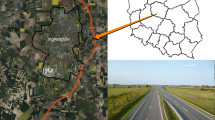Abstract
Reproductive output and the growth of captive voles were quantified under high and low avian predation risk in a semi-natural experiment. Voles were exposed to Eurasian kestrels (Falco tinnunculus), the main avian predator of vole species studied (Clethrionomys glareolus, Microtus agrestis and M. rossiaemeridionalis). Vole pairs were housed in cages settled under nest-boxes occupied by breeding kestrels or in control cages settled under empty nest-boxes for 2 weeks. The experiment was conducted in mid-summer when kestrels had half-grown nestlings, because in that time hunting adults and begging nestlings produce noise and scats which may indicate significant predation threat to voles housed underneath the nest-boxes. The risk of kestrel predation did not have any obvious impact on pregnancy rates, mean litter sizes, or growth rates of kestrel-exposed voles compared with control voles studied. These results indicate that the risk of avian predation does not depress the reproductive investment of voles.
Similar content being viewed by others
Author information
Authors and Affiliations
Additional information
Received: 3 November 1997 / Accepted: 16 February 1998
Rights and permissions
About this article
Cite this article
Klemola, T., Korpimäki, E. & Norrdahl, K. Does avian predation risk depress reproduction of voles?. Oecologia 115, 149–153 (1998). https://doi.org/10.1007/s004420050501
Issue Date:
DOI: https://doi.org/10.1007/s004420050501




